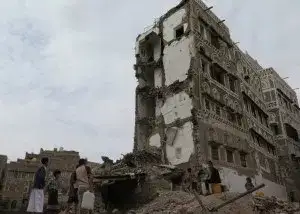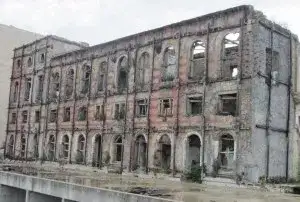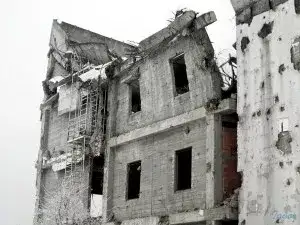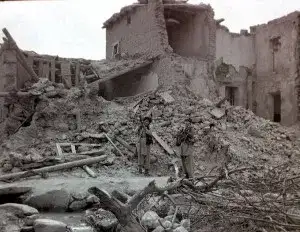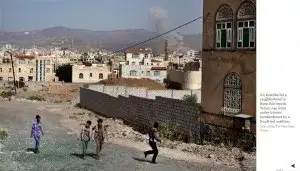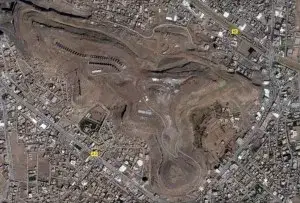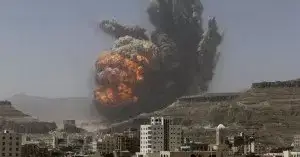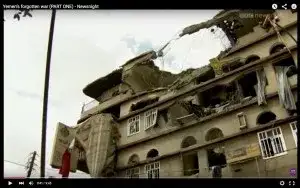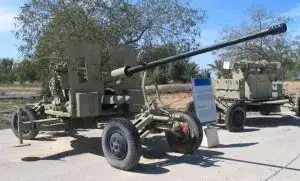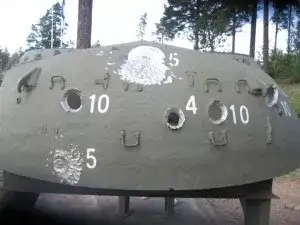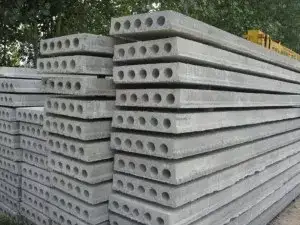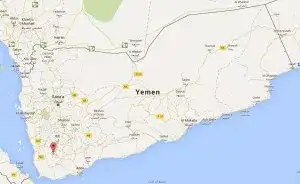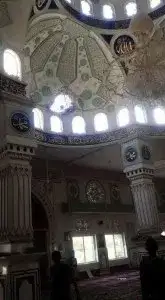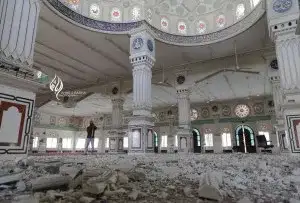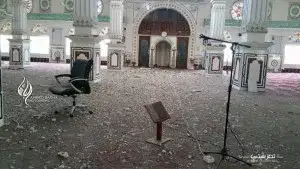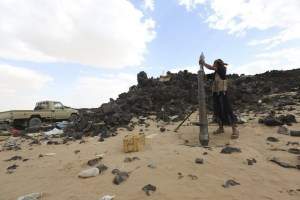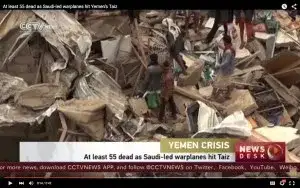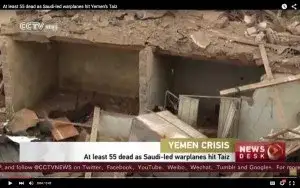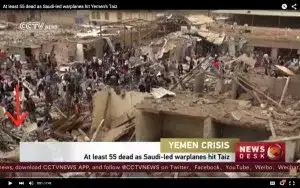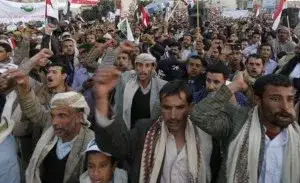“I’m no expert, but you’re wrong.”
September 14, 2023 by Thomas Wictor
Last summer, about 98.9 percent of the world’s Jew-haters contacted me to tell me that I was wrong about everything I posted on Israeli military actions. My posts were based on my knowledge of munitions, which I’ve studied for more than forty years. Actually, it’s getting closer to fifty years, since I started when I was five. I hadn’t planned to debunk the lies told about Israel; it just happened. I told people that my support of Israel is entirely personal. I hate injustice. Very few people believed me. They accused me of being a Jew or a “philosemite”—someone who loves Judaism. Well, a year later I’m debunking lies told about the Saudi-led Coalition fighting in Yemen.
So do you believe me now?
The reason I debunk lies about the IDF and the Coalition is because these combatants take extraordinary precautions to spare civilians. That should be acknowledged. It doesn’t matter if you don’t like Jews or Muslims: You don’t get to lie about them. Criticize them for things they actually do, not things you made up.
People who know absolutely nothing about munitions told me that I was wrong about the IDF, and now the same people are telling me that I’m wrong about the Coalition. The accusations are best summed up in this stupid editorial by the Guardian.
The Yemen war is a conflict in which a Saudi-led coalition of Sunni Arab states has, since March, launched an all-out air campaign against the Iranian-backed Houthi armed groups who seized the capital Sana’a a year ago. Saudi Arabia’s stated objective is to roll back the Shia Houthis and reinstate Yemen’s president, Abdu Mansour Hadi, who fled last year as the insurgency gained ground. Saudi methods have been dismally indifferent to the plight of civilians. The indiscriminate targeting of populated areas has become routine. Bombs and shells have been fired at hospitals, schools, factories and refugee camps. The death toll has reached 4,500 in six months. According to the United Nations, 80% of Yemen’s 25 million population is on the brink of famine.
The Guardian is repeating lies that the Iran-backed Houthi terrorists feed the press. When the Houthis took over Sana’a in September of 2014, the first thing they did was clamp down on the media. The only news coming out of Sana’a has been vetted by the Houthis. Unlike the editorial staff at the Guardian, I’m able to tell the signature of munitions. Therefore I can say without a doubt that the Coalition is not indiscriminately targeting civilians.
Amnesty International claims that the Saudis caused this destruction in Old City, Sana’a, on June 12, 2015.
When I looked at the images, I could see that the building collapsed from the bottom up. It’s very unusual for a building to fall like that unless the bottom floor was taken out. Structures that are bombed with aerial munitions are generally gutted, but the walls remain standing.
Often there’s a partial collapse, but at least some of the walls will survive.
The buildings in Old City were utterly demolished. Amnesty International says that a fragment of a Saudi MK-84 2000-lb (946-kg) bomb was found in the rubble, but there’s no reason to believe that the building was destroyed in an air strike. No photo of the bomb fragment is provided, the Houthis totally control the information coming out of Sana’a, Amnesty International spreads the lie that cluster munitions are banned, and the Saudis deny bombing the building.
According to Coalition spokesman Brigadier General Anwar Asseri, the Coaltion bombed no targets in Old City, Sana’a, on June 12, 2015. The building probably had a Houthi arms cache in it that exploded. I agreed with him. The damage is consistent with such an assessment.
Every day we read accusations that the Saudi-led Coalition is waging indiscriminate war against Yemeni civilians. However, we’re not being given accurate information. This piece in the New York Times claims that 2000 civilians have been killed. But look at the accompanying photo.
That’s not a “neighborhood”; that’s the missile base of Faj Attan.
When a publication lies to me, it loses its credibility forever. I’m sure that in the above cases, the press and NGOs are deliberately lying. However, I can’t say if the BBC reporter knows that this damage was caused by a Houthi antiaircraft shell.
The weapon is the 57mm S-60 cannon.
People told me that the shell is too small to make such a big hole, but they don’t understand two things: the shell has a contact fuse, and it’s extremely powerful. This tank turret was hit multiple times with an American 57mm M1 antitank gun.
You can see that the rounds completely penetrated the solid steel of the turret. The American 57mm shell had a muzzle velocity of 2700 feet (823 meters) per second. In comparison, the UOR-281 round used in the S-60 cannon has a muzzle velocity of 3281 feet (1000 meters) per second. And modern apartment roofing in Yemen isn’t steel; it’s hollow-core concrete slabs.
Not only is this lightweight material easily pierced by munitions, a rupture will cause it to lose its structural integrity and collapse under its own weight. That’s what happened here.
The antiaircraft round was a very powerful, high-explosive munition that made a hole, and then the roof and parts of the wall fell out.
While almost everyone is lying about the Coalition, not much is being made of provable Houthi war crimes. A Yemeni sent me photos of the Al-Saeed Mosque in Taiz.
The Houthis shelled it. I can tell that the strike is from a high-explosive mortar shell.
After the munition punctured the roof, it exploded, leaving no crater in the floor.
Since there’s no crater, it could not have been a Coalition aerial munition. The person who sent me the photos said this was the second Houthi attack on the mosque. After a quick search, I found that the first took place on August 14, 2015. In that incident, the Houthis again used a mortar.
The Coalition is accused of bombing civilians in Mocha, Taiz, killing at least 55.
However, there’s absolutely no evidence of fragmentation. All of that is blast damage. A massive pressure wave knocked down the buildings and twisted the metal grotesquely.
Here’s the epicenter of the explosion (red arrow).
There’s no crater, and as you can see in the background, many of the buildings are untouched. Why would the Coalition bomb only one structure if its goal was to terrorize civilians? Field representatives of NGOs keep saying that they can find no sign of a military target at the sites of alleged air strikes. But why would the Coalition drop only one bomb? If the Coalition is intentionally targeting civilians, why isn’t it killing more of them?
My guess is that the Houthis accidentally or deliberately blew up a weapons cache in Mocha. How careful do you think these guys are with firearms and explosives?
What a hideous disaster. God bless and protect those with the courage to fight these monstrosities.
This article viewed 737 times.

